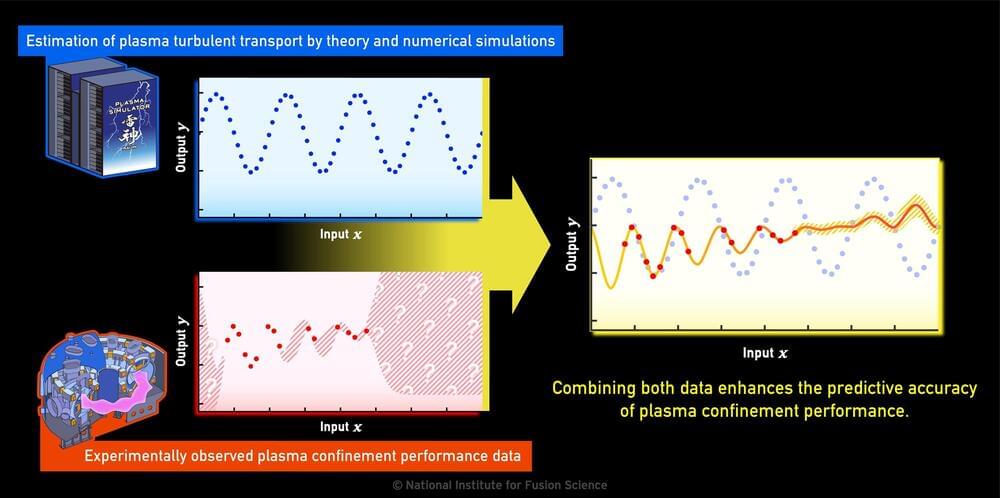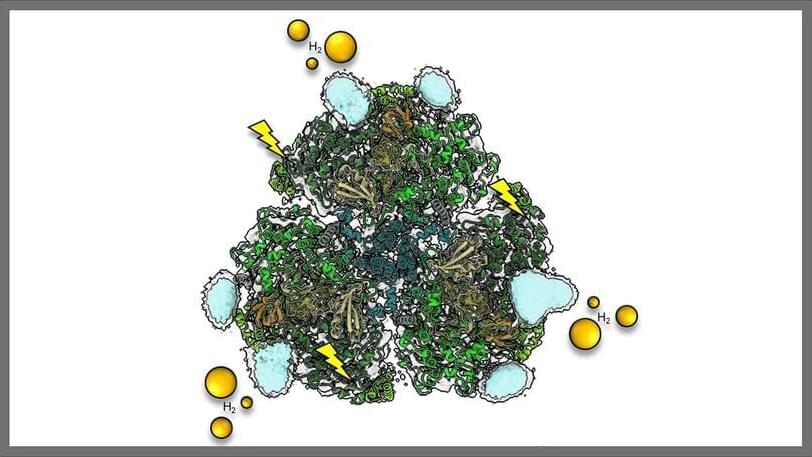Ultra-sensitive detectors have observed neutrinos from the Sun, whose signals mimic those expected to be produced by elusive dark matter.



An international team of scientists led by Dr. Lukas Bruder, junior research group leader at the Institute of Physics, University of Freiburg, has succeeded in producing and directly controlling hybrid electron-photon quantum states in helium atoms.
To this end, they generated specially prepared, highly intense extreme ultraviolet light pulses using the FERMI free electron laser in Trieste, Italy. The researchers achieved control of the hybrid quantum states using a new laser pulse-shaping technique. Their results have been published in the journal Nature.

Non-reciprocal interactions can increase the order in an active system. This is the finding of a study by scientists from the department of Living Matter Physics at the Max Planck Institute for Dynamics and Self-Organization (MPI-DS).
The researchers created a model to describe the emerging patterns depending on the amount of non-reciprocity in an active system. The work is published in the journal Physical Review Letters.
Living matter often shows characteristics that are absent in simpler physical systems. A typical example is the asymmetrical interaction between different particle species: one type of molecule might be attracted by the other, which in turn is repelled—just like a predator chases its prey which in turn tries to escape.

Fusion energy research is being pursued around the world as a means of solving energy problems. Magnetic confinement fusion reactors aim to extract fusion energy by confining extremely hot plasma in strong magnetic fields.
Its development is a comprehensive engineering project involving many advanced technologies, such as superconducting magnets, reduced-activation materials, and beam and wave heating devices. In addition, predicting and controlling the confined plasma, in which numerous charged particles and electromagnetic fields interact in complex ways, is an interesting research subject from a physics perspective.
To understand the transport of energy and particles in confined plasmas, theoretical studies, numerical simulations using supercomputers, and experimental measurements of plasma turbulence are being conducted.

In the world of science, even a small twist may carry immense implications for materials. Researchers at City University of Hong Kong have uncovered how a subtle rotation in 2D layers can give rise to a vortex electric field. This finding, published in Science, has the potential to impact electronic, magnetic, and optical devices as well as new applications in quantum computing, spintronics, and nanotechnology. According to Professor Ly Thuc Hue of CityUHK’s Department of Chemistry, the study demonstrates how “a simple twist in bilayer 2D materials” can induce this electric field, bypassing the need for costly thin-film deposition techniques.
Akin to solving intricate technical puzzles, researchers had to ensure clean, precisely aligned layers of material—a notoriously difficult challenge in the world of 2D materials. Twisted bilayers are made by stacking two thin layers of a material at a slight angle, creating unique electronic properties.
However, traditional methods of synthesizing these bilayers often limit the range of twist angles, particularly at smaller degrees, making exploration of their full potential nearly impossible. To address this, the team at City University of Hong Kong developed an ice-assisted transfer technique that uses a thin sheet of ice to align and transfer bilayers with precision.
Google has unveiled a new chip which it claims takes five minutes to solve a problem that would currently take the world’s fastest super computers ten septillion – or-1 years – to complete.
The chip is the latest development in a field known as quantum computing — which is attempting to use the principles of particle physics to create a new type of mind-bogglingly powerful computer.
Google says its new quantum chip, dubbed \.

Physicists have long theorized the existence of a unique state of matter known as a quantum spin liquid. In this state, magnetic particles do not settle into an orderly pattern, even at absolute zero temperature. Instead, they remain in a constantly fluctuating, entangled state.
This unusual behavior is governed by complex quantum rules, leading to emergent properties that resemble fundamental aspects of our universe, such as the interactions of light and matter. Despite its intriguing implications, experimentally proving the existence of quantum spin liquids and exploring their distinctive properties has been extremely challenging.
In a paper recently published in Nature Physics, an international group of researchers comprised of an experimental team from Switzerland and France and theoretical physicists in Canada and the U.S., including Rice University, have found evidence of this enigmatic quantum spin liquid in a material known as pyrochlore cerium stannate.
The instrument uses light to move atoms to measure incredibly small forces.
A self-correcting atom interferometer amplifies signals, aiding detection of ultra-weak forces from dark matter, dark energy, and waves.

Scientists have accidentally discovered a particle that has mass when it’s traveling in one direction, but no mass while traveling in a different direction. Known as semi-Dirac fermions, particles with this bizarre behavior were first predicted 16 years ago.
The discovery was made in a semi-metal material called ZrSiS, made up of zirconium, silicon and sulfur, while studying the properties of quasiparticles. These emerge from the collective behavior of many particles within a solid material.
“This was totally unexpected,” said Yinming Shao, lead author on the study. “We weren’t even looking for a semi-Dirac fermion when we started working with this material, but we were seeing signatures we didn’t understand – and it turns out we had made the first observation of these wild quasiparticles that sometimes move like they have mass and sometimes move like they have none.”

Photosynthesis is one of the most efficient natural processes for converting light energy from the sun into chemical energy vital for life on earth. Proteins called photosystems are critical to this process and are responsible for the conversion of light energy to chemical energy.
Combining one kind of these proteins, called photosystem I (PSI), with platinum nanoparticles, microscopic particles that can perform a chemical reaction that produces hydrogen — a valuable clean energy source — creates a biohybrid catalyst. That is, the light absorbed by PSI drives hydrogen production by the platinum nanoparticle.
In a recent breakthrough, researchers at the U.S. Department of Energy’s (DOE) Argonne National Laboratory and Yale University have determined the structure of the PSI biohybrid solar fuel catalyst. Building on more than 13 years of research pioneered at Argonne, the team reports the first high-resolution view of a biohybrid structure, using an electron microscopy method called cryo-EM. With structural information in hand, this advancement opens the door for researchers to develop biohybrid solar fuel systems with improved performance, which would provide a sustainable alternative to traditional energy sources.
Argonne and Yale researchers shed light on the structure of a photosynthetic hybrid for the first time, enabling advancements in clean energy production.